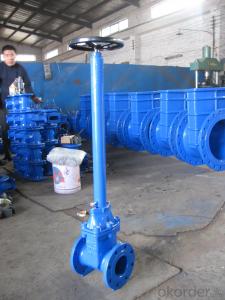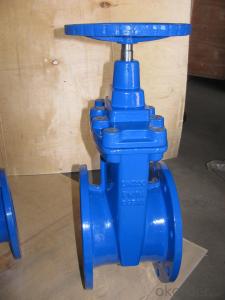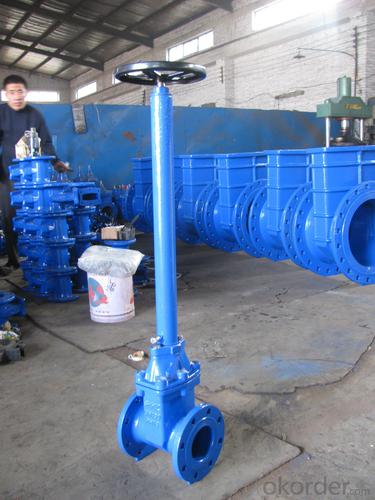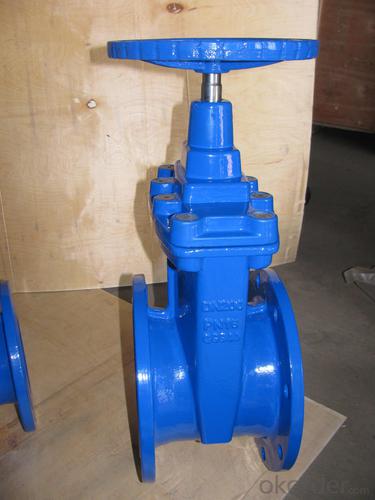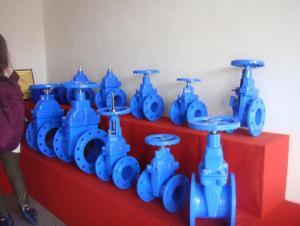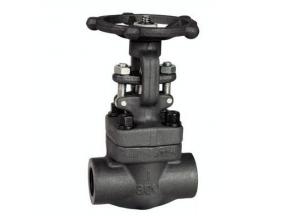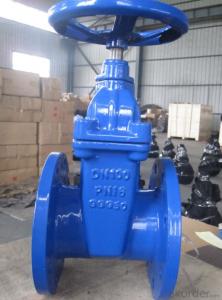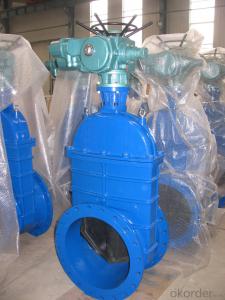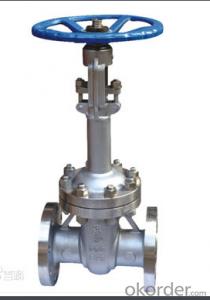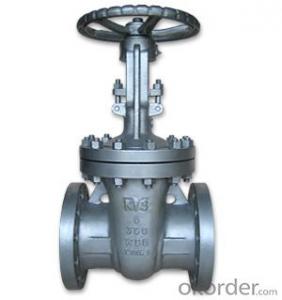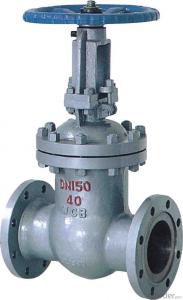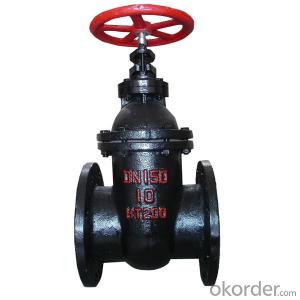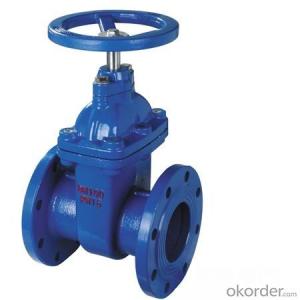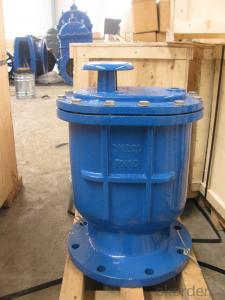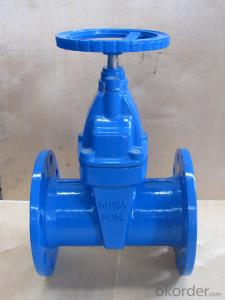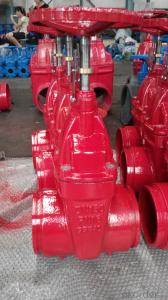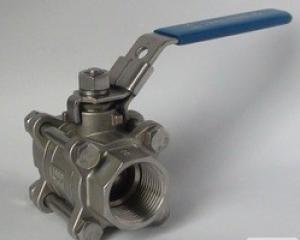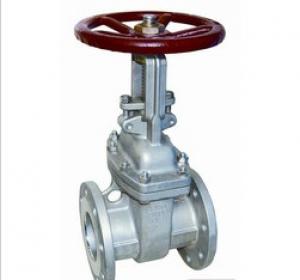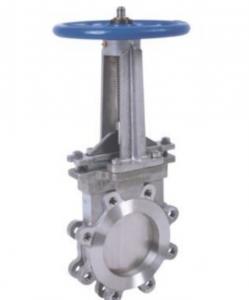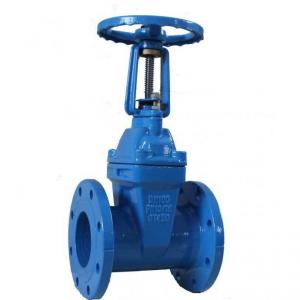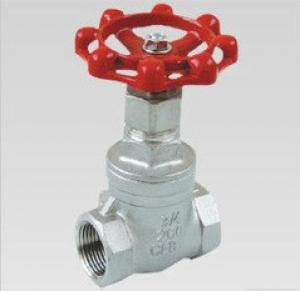Gate Valve UL/FM Approved Flanged Resilient NRS
- Loading Port:
- Tianjin
- Payment Terms:
- TT OR LC
- Min Order Qty:
- 100 kg
- Supply Capability:
- 10000 kg/month
OKorder Service Pledge
OKorder Financial Service
You Might Also Like
1.Structure of Gate Valve Description:
A gate valve, also known as a sluice valve, is a valve that opens by lifting a round or rectangular gate/wedge out of the path of the fluid. The distinct feature of a gate valve is the sealing surfaces between the gate and seats are planar, so gate valves are often used when a straight-line flow of fluid and minimum restriction is desired. The gate faces can form a wedge shape or they can be parallel. Gate valves are primarily used to permit or prevent the flow of liquids, but typical gate valves shouldn't be used for regulating flow, unless they are specifically designed for that purpose. Because of their ability to cut through liquids, gate valves are often used in the petroleum industry. For extremely thick fluids, a specialty valve often known as a knife valve is used to cut through the liquid. On opening the gate valve, the flow path is enlarged in a highly nonlinear manner with respect to percent of opening. This means that flow rate does not change evenly with stem travel. Also, a partially open gate disk tends to vibrate from the fluid flow. Most of the flow change occurs near shutoff with a relatively high fluid velocity causing disk and seat wear and eventual leakage if used to regulate flow. Typical gate valves are designed to be fully opened or closed.When fully open, the typical gate valve has no obstruction in the flow path, resulting in very low friction loss.
2. Main Features of the Gate Valve:
• Valve body cavity using non-toxic epoxy resin,both inside and outside flashboard completely is coated with rubber
• Free of water pollution
• High manufacturing accuracy
• High strength
• Environmental protection and energy saving
• Good visual effect
3. Images
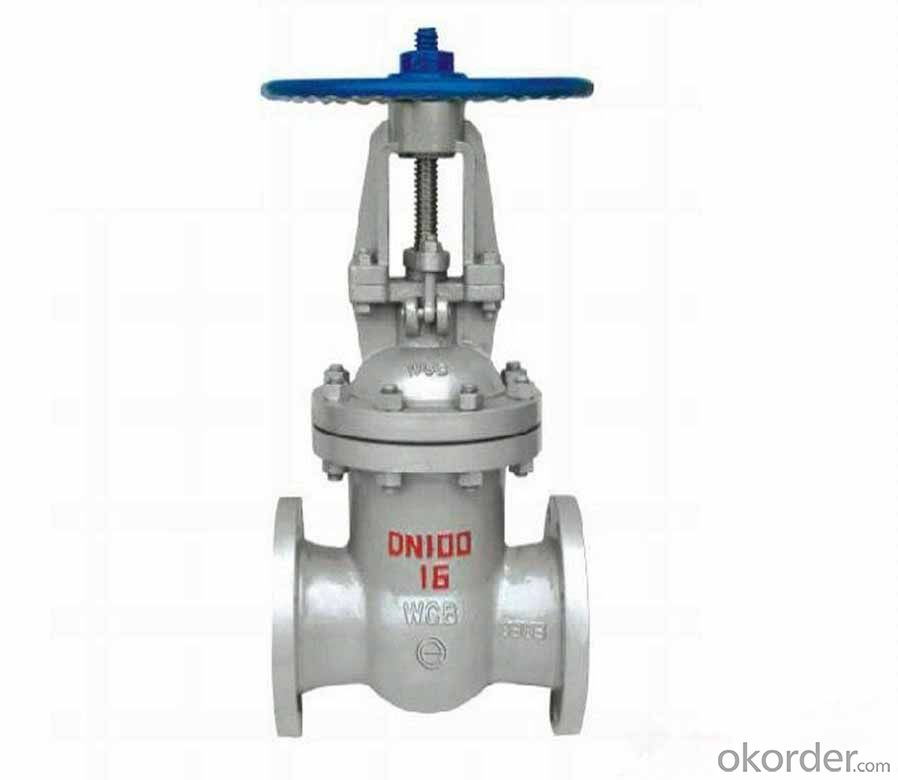
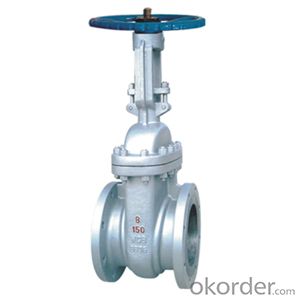
4. Gate valve Specification
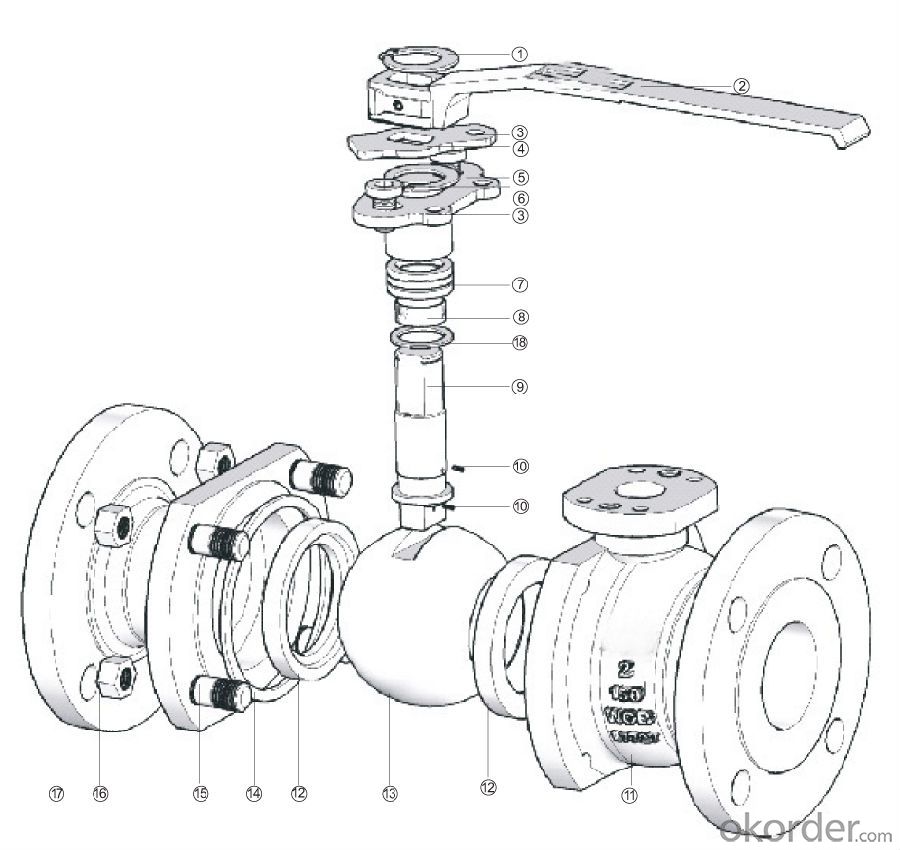
5.FAQ
1. What's are the characteristics of gate valve?
The distinct feature of a gate valve is the sealing surfaces between the gate and seats are planar, so gate valves are often used when a straight-line flow of fluid and minimum restriction is desired. The gate faces can form a wedge shape or they can be parallel.
2. What is the work principle of gate valve ?
The gate faces can form a wedge shape or they can be parallel. Gate valves are primarily used to permit or prevent the flow of liquids, but typical gate valves shouldn't be used for regulating flow, unless they are specifically designed for that purpose. Because of their ability to cut through liquids, gate valves are often used in the petroleum industry.
3. What is the structure?
Bonnets provide leakproof closure for the valve body. Gate valves may have a screw-in, union, or bolted bonnet. Screw-in bonnet is the simplest, offering a durable, pressure-tight seal. Union bonnet is suitable for applications requiring frequent inspection and cleaning. It also gives the body added strength. Bolted bonnet is used for larger valves and higher pressure applications.
- Q: What do you mean by "2" and "200 CF8M"?
- CF8M is 316,2 "is 50200 caliber stainless steel pressure (American Standard, LB)
- Q: Soft sealed gate valve and hard sealing gate valve which good?
- If the caliber, material and pressure levels are the same, the current market price is still soft sealed gate valve, about 20-30%.
- Q: Why can't the pressure measuring point be set at the two ends of the gate valve when measuring the resistance loss of the gate valve?
- In the standard JB/T5296-1991 "universal valve flow coefficient and the flow resistance coefficient test method",
- Q: What are the features and uses of the gate valve?
- What is gate valve? What is the purpose of forged steel gate valves? What are the features of forged steel gate valves?Is the gate valve opening and closing parts, RAM direction of motion perpendicular to the direction of the fluid, valve can only be fully open and fully closed, can not be adjusted and the throttle. The gate valve movement direction perpendicular to the direction of the fluid, valve can only be fully open and fully closed, can not be adjusted and the throttle. The gate has two sealing surfaces, and the two sealing surfaces of the most commonly used gate valves form wedge and wedge angles vary with valve parameters. Gate valve drive classification: manual gate valve, pneumatic gate valve, electric gate valve.DefinitionGate valve means the closing of the valve (gate) along the central line of the vertical direction of the valve. The gate valve is mainly used for cutting in the pipeline.The valve is a valve with a very wide, cutting device general caliber DN = 50mm use it, sometimes a small diameter cutting device also use valve, gate valve has the following advantages:Fluid resistance is small.Minor force needed for opening and closing.Medium flow is unrestricted.When opening fully, the sealing surface is eroded by the working medium smaller than the cut-off valve.The shape is relatively simple and the casting process is betterValve also has shortcomings:The overall size and opening height are larger. Larger space required for installation.In the process of opening and closing, there is relative friction between the sealing surfaces, which may cause galling.Gate valve generally has two sealing surface, processing, grinding and maintenance to increase some difficulties.
- Q: What are the main types of gate valves?
- According to the thread position of the valve stem, can be divided into two kinds of open rod gate valve and dark rod gate valve.
- Q: Stainless steel gate valve DN150 200300 weight, who knows?
- Valve selection of different driving methods, connection forms, structural forms, nominal pressure, sealing surface materials, lining materials, valve body material will affect the weight of the gate valve more or less, it can not be generalized.Take my commonly used Z41H-16P (i.e. PN1.6MPa) series stainless steel gate valve as an example, and the weight of DN150/200/300 is 134/192/379kg. Of course, different manufacturers may vary in weight, but not much.I hope I can help you.
- Q: Generally, how big is the diameter of the installation flange plate gate valve?
- Under normal circumstances:Flanged gate valves for piping over DN50,DN50 (below) can be made of wire or gate valves, or flanged gate valves (flanged valves or welded gate valves)
- Q: What is the difference between gate valve and gate valve? Is it the same valve?
- The same, very few people call gate valve, all call gate valve.
- Q: What does gate valve DN80-PN16-QT450 mean?
- DN80 means: liquid, internal thread connection, the valve sealing surface material for rubber, seat sealing surface material for lining adhesive, nominal pressure of 10 kg / cm2, nominal diameter of 80mm Iron Butterfly valve.
- Q: What does "Z45W-10T" mean?What does each letter stand for?
- W is the seal material or lining material code, the valve sealing material is the valve body material, the valve sealing surface material code with "W" said, here stands for brass;The 10 is the pressure code, which stands for PN10, which is often called 1.0MPa;
Send your message to us
Gate Valve UL/FM Approved Flanged Resilient NRS
- Loading Port:
- Tianjin
- Payment Terms:
- TT OR LC
- Min Order Qty:
- 100 kg
- Supply Capability:
- 10000 kg/month
OKorder Service Pledge
OKorder Financial Service
Similar products
Hot products
Hot Searches
